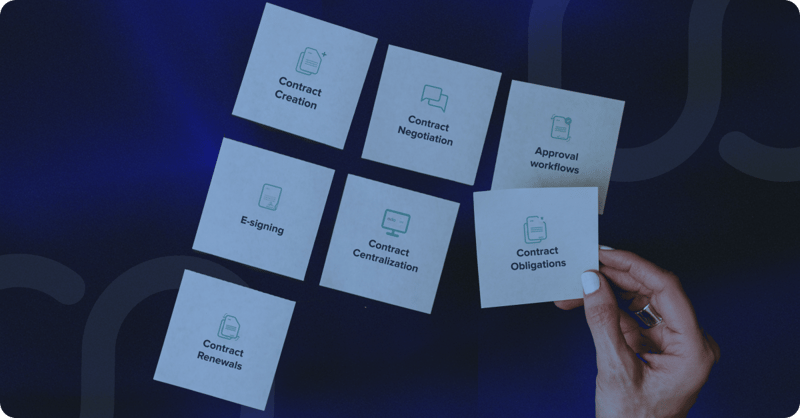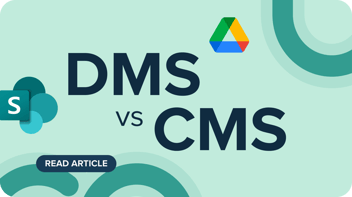10 Essential contract types & how to manage them effectively
Contracts are the backbone of modern business. Whether you're in legal, finance, procurement or facility... knowing your way around different contract types, and how to manage them efficiently, can be the difference between smooth operations and costly bottlenecks.
In this guide, we'll cover 10 essential types of contracts, explain their purpose, and provide practical tips on how to manage them effectively using AI-driven tools like Contractify.
This blog is your go-to resource for mastering contract workflows, reducing risk, and improving collaboration across teams.

Why understanding contract types matters
Not all contracts are created equal. Each contract type has different risks, obligations, stakeholders, and management needs. If your company handles high-value, high-risk, or high-volume contracts, proper classification and management are key to operational success.
With clear contract visibility, version control, automated reminders, and searchable metadata, your team can stay compliant, save time, and focus on strategic tasks.
1. Sales contracts
Sales contracts define the terms of selling goods or services, making them vital to any organization’s revenue stream. These agreements typically cover pricing, delivery terms, warranties, and payment milestones.
However, poor tracking of obligations or missed renewal opportunities can lead to revenue loss or legal disputes. With a smart contract management platform, sales contracts become easier to manage and more transparent. Automated alerts for upcoming delivery dates and payment terms, searchable contract metadata, and digital workflows help your sales and finance teams stay in sync.
2. Procurement contracts
Procurement contracts formalize relationships with vendors and suppliers. They often include SLAs, penalty clauses, delivery schedules, and termination conditions.
Because these contracts carry supply chain and financial risks, it’s crucial to track contract terms, renewal dates, and vendor performance metrics. With centralized storage and AI-powered clause detection, procurement teams can quickly access the latest terms, compare supplier agreements, and avoid disruptions.
3. Employment contracts
Employment contracts outline roles, compensation, benefits, and termination clauses. They also cover confidentiality, intellectual property, and legal compliance.
Managing these agreements well means more than just storing signed PDFs. You need secure access control, version tracking, and automation for critical milestones such as probation periods or contract renewals. With Contractify, HR and legal teams can collaborate safely and ensure contracts stay up to date, even when employees’ roles evolve.
4. Non-Disclosure Agreements (NDAs)
NDAs are critical for protecting confidential information during partnerships, hiring, product development, or negotiations.
But many companies lose track of when NDAs expire or who signed what version. That’s a legal risk waiting to happen. With automated NDA templates, metadata tagging, and expiry reminders, you can ensure sensitive information is always protected and properly governed.
💡 Use AI for clause recognition to streamline NDA management.
5. Lease Agreements
Whether you’re renting office space, equipment, or vehicles, lease agreements are long-term and typically high-cost.
Missed renewal windows, overlapping contracts, or neglected escalation clauses can cost your business money or even operational continuity. Lease agreements should be tracked with calendar integrations, tagged by location or asset type, and monitored for payment obligations. With Contractify, you can view all contract deadlines in one central dashboard, avoiding last-minute surprises.
6. Service Level Agreements (SLAs)
SLAs define the performance expectations between service providers and clients. Think uptime guarantees, support response times, or delivery metrics.
When SLAs aren’t tracked or enforced, service quality can slip without recourse. By linking SLAs to vendor performance metrics, setting up KPI alerts, and maintaining clause visibility, you ensure that your partners deliver on their promises or face the agreed consequences.
7. Partnership Agreements
Joint ventures and business collaborations require detailed partnership agreements that define roles, revenue sharing, intellectual property rights, and exit strategies.
Managing these contracts well involves more than simply signing on the dotted line. Partnership agreements often evolve, so tracking version history, keeping everyone aligned on key clauses, and making contracts easily accessible to both legal and executive teams is key to long-term success.
8. Licensing Agreements
Licensing agreements regulate how intellectual property, software, patents, trademarks, or creative content is used by others.
Mismanagement here can lead to expired rights, unauthorized use, or missed royalty payments. With metadata-driven categorization and expiry tracking, licensing contracts become easier to oversee. Alerts can notify teams when usage rights are due to expire or need renegotiation.
9. Franchise Agreements
Franchise agreements establish the operational and legal structure between a franchisor and its franchisees. These contracts typically outline branding, territory, operational rules, and royalty payments.
Given their repetitive yet legally sensitive nature, consistency and compliance are crucial. A contract management system like Contractify enables franchisors to standardize contract templates, track compliance milestones, and maintain a clear audit trail across all franchise relationships.
10. Consultancy Agreements
When working with external consultants or freelancers, consultancy contracts define the scope of work, deliverables, payment conditions, and IP ownership.
Poorly defined agreements can lead to disputes over scope or ownership. A contract management software simplifies consultancy contracting with e-signature workflows, automated version tracking, and deliverable-linked reminders that help ensure both parties stay aligned throughout the engagement.
How to manage all these contracts more effectively
Managing a wide range of contract types doesn’t have to mean juggling dozens of spreadsheets or folders. The most successful companies are using contract lifecycle management (CLM) software to centralize control, improve collaboration, and mitigate risks.
Here’s what effective contract management looks like today:
- Centralized storage with powerful search and filters >>
- Automated alerts for renewals, obligations, and deadlines >>
- Role-based access control to protect sensitive information >>
- Clause recognition and metadata tagging using AI >>
- Audit trails and version history for compliance and transparency
Conclusion
Whether you're managing high-risk agreements, large volumes, or both, the way you manage contracts can directly impact your business efficiency and legal safety. Managing contracts across so many types doesn’t need to be chaotic or time-consuming. The secret is automation, visibility, and centralization.
👉 Ready to take control over all your contract types?
With Contractify, you can reduce administrative workload, lower contract risk, and boost collaboration across departments, all while making contract management more accessible and intuitive than ever before 🚀
🎯 Book a free demo today to see how Contractify simplifies your contract management



